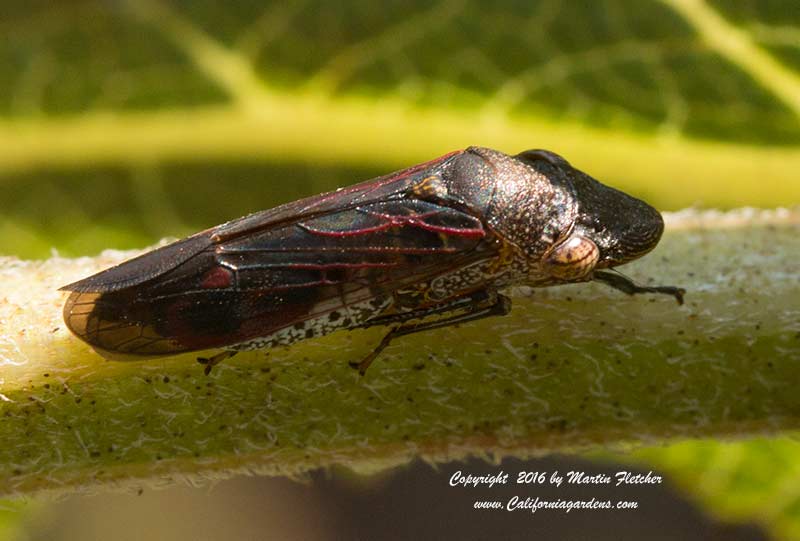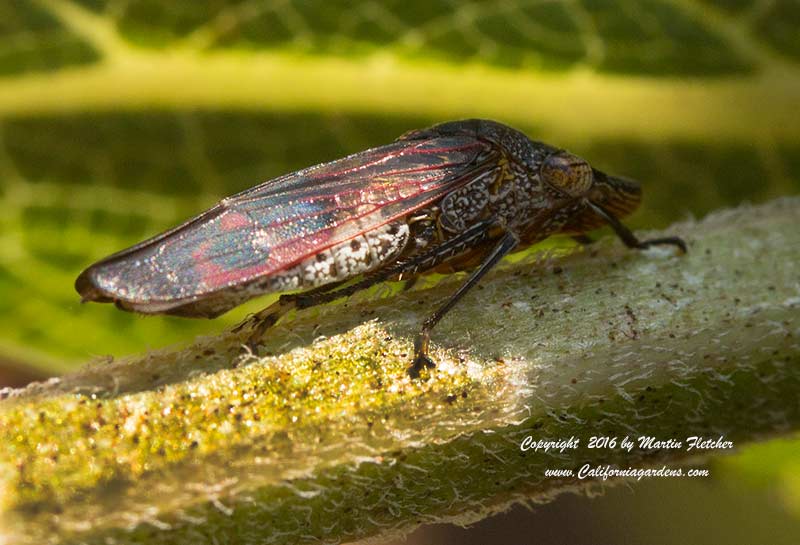Glassy Winged Sharpshooter ~ Homalodisca vitripennis
The first thing you usually notice when the Glassy Winged Sharpshooters (Homalodisca vitripennis) have taken up residence in your garden is that it is raining under some of the trees. That liquid is the sap from the trees once passed through the gut of a Glassy Winged Sharpshooter and yes it makes a sticky mess on garden furniture or cars or just on gardeners. These small sucking insects cause problems with a variety of ornamental plants as well as big time problems for grape growers. Xylella fastidiosa is the bacterium that causes scorch and Pierces Diesease. Basically the bacteria clogs the passageways where liquids should be going up and down the plants. There are named diseases for Oleanders, Grapes, Almonds, Peaches, Mulberrys. In my gardens I have often seen Glassy Winged Sharpshooters on Crepe Myrtles, Magnolias, Deciduous Fruit trees and the occaisional rose bush. The Glassy Winged Sharpshooter in the pictures was on a Clary Sage. Glassy Winged Sharpshooters like smooth leaves to lay their eggs on. Citrus is a favorite but Pittosporum works pretty well too. The lay their eggs in a row up to a dozen at a time. From most angles the Glassy Winged Sharpshooter looks like a little brown cigar about half an inch long. But given good light they are pretty colorful. The bacteria isn't supposed to be virulent when crossing from one plant species to another. But I have some doubts since it is the same species of bacteria with all of these diseases and the experiments used very small sample sizes. In any case the insects are quite capable of being a very effective vector moving bacteria from Oleander to Oleander or Grape to Grape. One tree can have hundreds of bugs at a time. The Glassy Winged Sharpshooter is well established on the east coast but is a relatively recent introduction to California during the last couple of decades they have steadily moved northward. On Oleanders I have been able to put off the inevitable death of the plants for a few years by pruning below any evidence of scorch.

Top View Glassy Winged Sharpshooter - Homalodisca vitripennis. High resolution photos are part of our garden image collection.

Side View Glassy Winged Sharpshooter - Homalodisca vitripennis.
